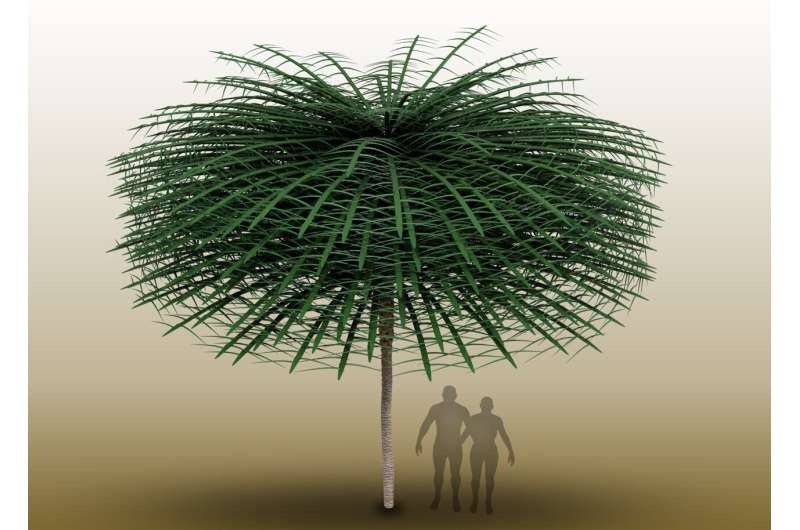Rare 3D fossils show that some early trees had forms unlike any you've ever seen
Originally published by Cell Press, on February 2, 2024
Sanfordiacaulis model with simplified branching structure for easier visualization. Note that humans are provided for scale but did not exist concurrently with the tree. Credit: Tim Stonesifer
In the fossil record, trees typically are preserved with only their trunks. They don't usually include any leaves to show what their canopies and overall forms may have looked like. But now, researchers reporting in the journal Current Biology describe fossilized trees from New Brunswick, Canada with a surprising and unique three-dimensional crown shape.
"The way in which this tree produced hugely long leaves around its spindly trunk, and the sheer number over a short length of trunk, is startling," says Robert Gastaldo of Colby College in Waterville, Maine.
The forms taken by these 350-million-year-old trees look something like a fern or palm, even though palms didn't arise until 300 million years later, he explains. However, the functional leaves in ferns or palm trees cluster at the top and are relatively few.
"In contrast, Sanfordiacaulis preserves more than 250 leaves around its trunk, with each partially preserved leaf extending 1.75 meters from it," Gastaldo says.
"We estimate that each leaf grew at least another meter before terminating. This means that the 'bottle brush' had a dense canopy of leaves that extended at least 5.5 meters (or 18 feet) around a trunk that was non-woody and only 16 centimeters (or 0.5 feet) in diameter. Startling to say the least."
This work was made possible by a long-term international collaboration with Matthew Stimson and Olivia King of the New Brunswick Museum, Saint John, and Saint Mary's University in Halifax.


Comments
Post a Comment